Most of us have probably noticed that KPIs tend to complicate cooperation between different departments and create so-called silos. Isolated units that sub-optimize by putting their own goals first without considering the entire company’s best interests. In companies around the world, leaders struggle to address this in different ways. If you discover that the set KPIs are not met, you create more and more KPIs to push employees into a corner where they only can go in one direction. Another common phenomenon is that KPIs are “cascaded” down through the organization in a purely mathematical exercise where everyone is expected to contribute equally – without regard to different conditions. One might ask whether the use of KPIs is not really a new form of old-fashioned directive?
How far can KPIs be used to create momentum and development? It the target setting leadership style it is wanted to challenge, and tickle people´s competitive instinct. Most often, the result, and perhaps the intention, is that we put pressure and create anxiety around the scenario where the target is not achieved? We also raise the bar from year to year – often without discussion of what the plan should look like to succeed in the implementation. Setting targets becomes a negotiation between manager and the subordinate that replaces the discussion about what the actual plan to succeed should look like.
The original purpose of KPIs (Key Performance Indicator) is that they should be indicators for development and progress. Are we on the right path and doing the right things to take us in the direction we want?
Anyone who has ever struggling meeting their KPI figures probably recognizes the following scenario:
The manager asks for a meeting the following week to discuss how things are going for my department/project/own area of responsibilities. I know that I am behind my KPIs. The most common is that we spend the time before the meeting to prepare a “defense speech”. What external circumstances, other departments’ shortcomings, Covid-19, financial situation, China’s trade war etc. to explain why I cannot be held fully responsible for being behind my goal. A great focus is then set on why, WHY I haven’t reached my goal? The problem is that why is backwards and rarely provides support for how to move forward.
COD’s tips:
Most companies feel a great need for metrics that indicate that they have a progress and are developing as a company. Look ahead and use KPIs according to the original idea with them – as an indicator of development. At follow-up sessions, the defense speech should be replaced by an agenda like this:
- Background – What are the circumstances and parameters that are most important for my continued work in developing the area I am responsible for?
- My plan – I tell you what my plan looks like for the continued work
- Actions – I go through how I have prioritized and chosen among possible activities to implement my plan.
- My KPI in relation to plan – Here we discuss together whether the plans and actions I have planned will lead to me reaching my KPI. If we make the joint assessment that I will have difficulty reaching all the way, it is the manager’s task to ask what support I need to get there.
From working with pressure and anxiety as a driving force for progress, we thus go on to proactively discuss plans and resource needed to ensure a good progress in the business. The benefits of this approach are many. But the most important thing is to talk about the most important thing – the proactive plan. In addition, the manager can sleep better at night knowing that the employee has a plan, which is likely to result in an achieved KPI.
